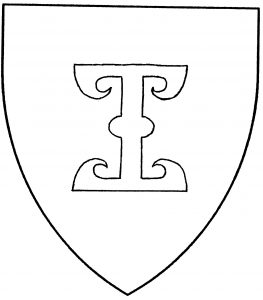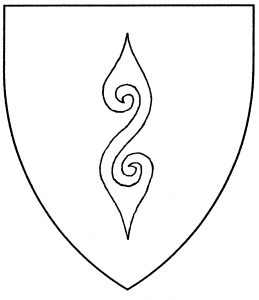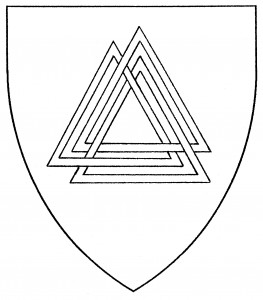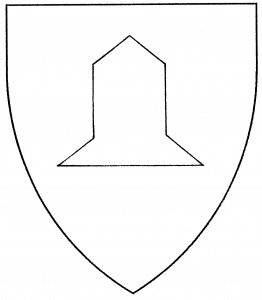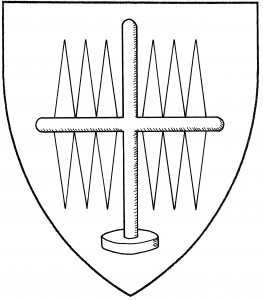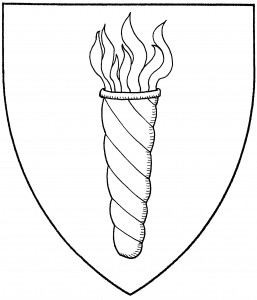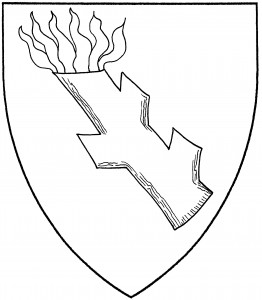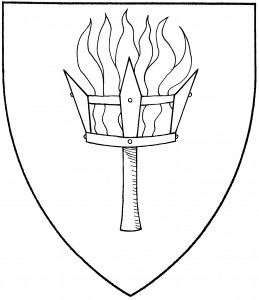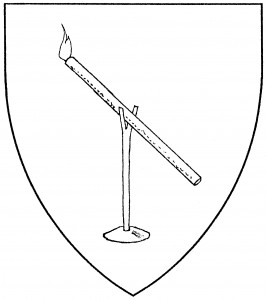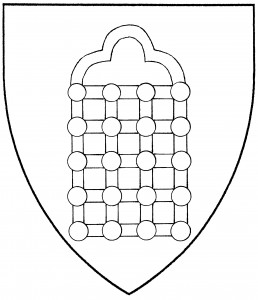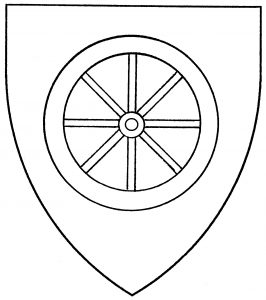
Wheel (Period)
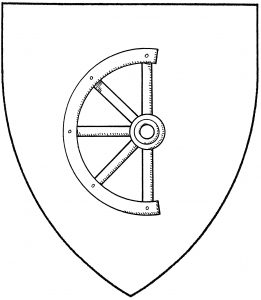
Dexter half of a wheel (Period)
A wheel is a circular spoked frame, attached to an axle by its hub and permitted to spin freely. Sets of wheels are normally found attached to
wagons, but wheels are often found as charges in their own right. The default wheel is more fully blazoned a “wagon-wheel” or “cartwheel”; it’s found as early as c.1340, in the arms of Berg [Zurich 232]. The number of spokes is usually left to the license of the artist – six or eight spokes seem to be the norm – but sometimes the number is explicitly blazoned. The wheel’s “proper” coloration is brown, the color of wood.
Particularly in German heraldry, we find examples of partial wheels: a quarter-wheel, as in the arms of von Billick, 1605 [Siebmacher 71], or a half-wheel, as in the arms of Rusetzker [Siebmacher 73]. The orientation of the partial wheel (e.g., “dexter half of a wheel”, as in the illustration) must be specified in blazon.
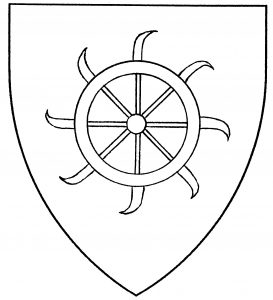
Catherine’s wheel (Period)
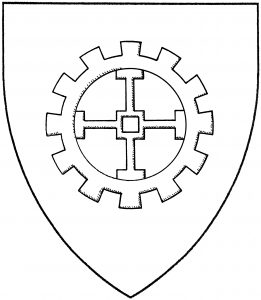
Cog-wheel (Period)
Variants of the wheel include the “Catherine’s wheel”, the symbol of the martyr St. Catherine, with curved knife-blades radiating from the rim. As an heraldic charge, it’s found in the arms of Brentingham, Bishop of Exeter 1370-94 [DBA3 443]. There is the “cog-wheel”, also called a “gear-wheel” or “mill-wheel”, with an embattled outer edge, used in mechanisms from tiny clockworks to giant mill-works; it’s found in the canting arms (German
Mühle, “mill”) of Mülinen c.1460 [GATD 20v].
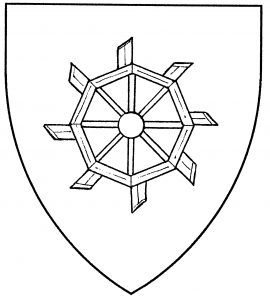
Water-wheel (Accepted)
Finally, there is the “water-wheel”, unique to Society armory, with vanes on the outer edge to draw power from running water. See also
grindstone, spinning wheel.
Cyprian of the Wheel bears: Argent, a wooden cartwheel of twelve spokes proper.
Caterine Barré de Venoix bears: Barry azure and Or, a Catherine wheel gules.
Iathus of Scara bears: Ermine, a cog wheel gules.
Patrick MacFynn bears: Per chevron vert and azure, a chevron argent between two natural dolphins embowed respectant Or and a water wheel argent.
Catherine de la Loire bears: Purpure, a Catherine’s wheel missing the dexter chief quarter between three fleurs-de-lys argent.
